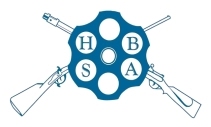Four Types competition
‘THE FOUR TYPES COMPETITION’
(Formerly the ‘Siege of Ladysmith’, ‘Old Bill’ and ‘Two Types’ Competitions)
ONLINE BOOKING (will re-open a few weeks before the next competition – see our Calendar)
Member’s Match Entry including 3 cards £18
Guest Match Entry including 3 cards £22
INTRODUCTION
The aim is to evoke Boer War, Great War and WW2 battle shooting, so the rifles used must be Service Rifles of the types that were actually used in those conflicts. There will also be an ‘Any Rifle’ Class for rifles with target sights.
CLASSES OF RIFLES
1. Boer War Rifles – of both the British Empire and Boer Forces
A. Boer War Long rifles
B. Boer War Carbines
C. Other 19th Century rifles and carbines
(The rifle must be of a type actually used in the conflict, it’s date of manufacture may be later, but it must be of a 19th century pattern.
Sights must be ‘as issued’. No target or optical sights are permitted)
2. Great War Rifles – of Allied, Enemy and Neutral Forces
D. Great War rifles with ‘As issued Iron Sights’
E. Great War sniper rifles with contemporary optical sights
(The rifle must be of a type actually used during the conflict. The date of manufacture may be later than 1918, provided it is of a pre 1919 pattern (HBSA Classic Rifle)
Sights: As issued ‘iron sights’ only. Optical sights are not permitted except in Class 2E and they must be of a contemporary pattern.
3. World War Two Rifles – of Allied, Enemy and Neutral Forces
F. with ‘As issued Iron Sights’
G. with contemporary telescopic / optical / target sights
(The rifle must be of a type actually used in WW2. The date of manufacture may be later than 1945, provided the pattern is authentic to WW2 . Lee Enfield Mk 1/2, 1/3, and Mk 3 rifles are permitted as are manually operated versions of WW2 semi and fully-automatic rifles.
In the case of telescopic /optical sights, they should be of a pre 1950 design, but do not need to be of a military pattern or actually manufactured during WW2)
4. Any Other Rifle
H. First generation target rifles, and historic rifles with target sights (centrefire only)
COURSE OF FIRE
(This will be same for all Classes and types of Rifle) No sighters during the competition.
Squadding Cards (which will be common to all practices) for this competition will be issued on the Firing Point. Competitors are to complete all rifle details and class entered before shooting.
Squadding will be by queuing on seats behind the firing point.
Ten rounds (five rounds snap-shooting, five rounds rapid): fired from the prone position, a hand rest or filled sandbag may be used for support. Those unable to shoot prone may, with the RCO’s permission, shoot from the kneeling, or sitting position (including from a chair).
Target at 100 yards will be ARA Fig11 or NRA DP1 equivalent with a 4 inch central vertical band scoring 5. Hits on the remainder of the figure score 3. Hits on the backing screen score 0.
PROCEDURE
1. Snapshooting: the Range Conducting Officer will order the shooters “With a magazine of five rounds, Load. Reload with a further five rounds at will”. Shortly after the order “Watch and shoot, watch and shoot”, the target will be shown for 5 exposures of approx 3 seconds each, one shot to be fired at each exposure. The target will disappear for between five and ten seconds between exposures.
2. Rapid Firing: After a break of 30 seconds (during which time the firers will reload a further 5 rounds) the target will appear for one exposure of 20 seconds to fire five rounds.
The targets will then be marked. The centre of the group will be shown by a spotting disc and the scores passed to the firing point by radio. Only after rifles have been inspected and cleared, bolts removed / or breech flags inserted, may competitors leave the Firing Point.
